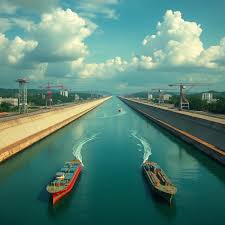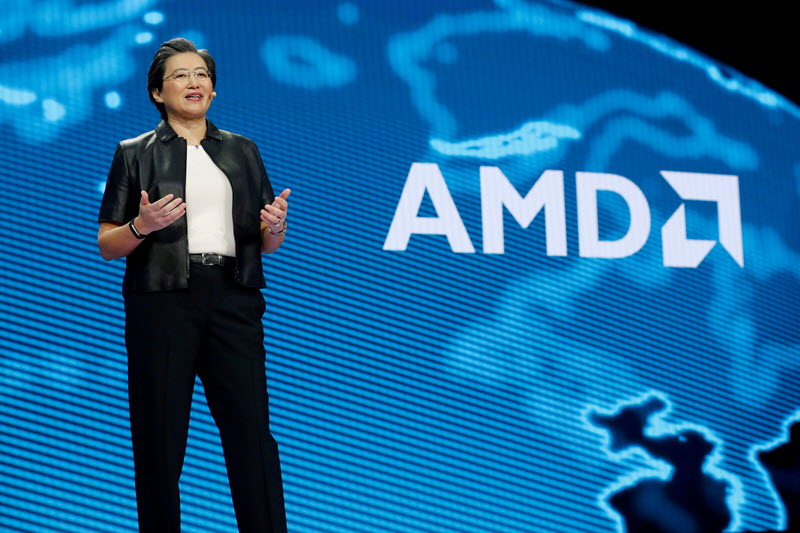EROME – The Panama Canal has been a strategic global asset for over a century, acting as a critical shortcut for international maritime trade. However, its significance has evolved in the 21st century, becoming a focal point in the power struggle between the U.S. and China. This article delves into the reasons why the Panama Canal has become so important in this geopolitical rivalry and explores the ongoing battle for influence over this narrow but vital waterway.
Table of Contents
| Sr# | Headings |
|---|---|
| 1 | Introduction: The Panama Canal’s Global Importance |
| 2 | A Brief History of the Panama Canal |
| 3 | Strategic Location: The Heart of Maritime Trade |
| 4 | U.S. Interests in the Panama Canal |
| 5 | China’s Growing Influence in Latin America |
| 6 | The Role of the Panama Canal in Global Trade |
| 7 | China’s Investments and Infrastructure Projects |
| 8 | The U.S.-China Rivalry: Economic and Political Impacts |
| 9 | The Geopolitical Stakes of Controlling the Canal |
| 10 | The Role of Panama in the Power Struggle |
| 11 | Key Players in the Panama Canal Debate |
| 12 | What’s at Stake for Global Security? |
| 13 | The Future of the Panama Canal: What Lies Ahead? |
| 14 | Conclusion: The Battle for Influence |
| 15 | FAQs |
Introduction: The Panama Canal’s Global Importance
Imagine trying to navigate a massive ship from the Atlantic to the Pacific Ocean, only to realize that the distance between the two is thousands of miles longer than it needs to be. The Panama Canal offers a shortcut that saves time, money, and effort for global trade. The canal connects the Atlantic and Pacific Oceans, bypassing the long and dangerous route around the southern tip of South America. Today, its importance isn’t just about trade. The U.S. and China, two of the world’s most powerful nations, are locked in a geopolitical tug-of-war for control and influence over this narrow yet highly significant waterway.
A Brief History of the Panama Canal
Before diving into the current power struggle, let’s take a step back in time. The Panama Canal was completed in 1914 and quickly became one of the most impressive engineering feats of the 20th century. At first, the U.S. controlled the canal zone, maintaining strong economic and military interests in the region. However, in 1999, the U.S. handed over control to Panama, marking a significant shift in ownership. Since then, the canal’s influence has grown, with new players like China stepping into the game.
Strategic Location: The Heart of Maritime Trade
The Panama Canal isn’t just a shortcut—it’s a lifeline for global trade. Over 12,000 ships pass through the canal each year, carrying goods that are essential to economies worldwide. Whether it’s oil, grains, or electronics, the Panama Canal facilitates the movement of goods between the Americas, Europe, and Asia. This strategic location gives it immense geopolitical power. Whoever controls or influences the canal holds the key to some of the most important trade routes in the world.
U.S. Interests in the Panama Canal
For the U.S., the Panama Canal has been a matter of national security and economic dominance for decades. Even though Panama controls the canal today, the U.S. remains a key player due to its long-standing influence in the region. American companies rely on the canal for the transport of goods, and the U.S. Navy uses the waterway for military operations. With China emerging as a stronger competitor on the world stage, the U.S. has become increasingly wary of China’s growing interest in the canal’s influence.
China’s Growing Influence in Latin America
China’s Belt and Road Initiative (BRI) has played a major role in strengthening its economic and political ties with countries in Latin America. Panama, strategically located at the entrance to the canal, is an important partner in this initiative. In 2017, Panama officially recognized China as a key economic partner, which led to several infrastructure investments, including in ports and logistics. As China deepens its involvement in Panama and the broader Latin American region, the U.S. has grown more concerned about its strategic interests.
The Role of the Panama Canal in Global Trade
The Panama Canal doesn’t just serve U.S. and Chinese interests—it’s vital for the global economy. Shipping routes that once took months can now be completed in a fraction of the time, saving companies billions of dollars in transportation costs. As trade between Asia and the Americas continues to rise, the canal has become even more important, especially as global shipping hubs and trade routes evolve.
China’s Investments and Infrastructure Projects
China has been ramping up its investments in Panama, focusing on upgrading infrastructure to enhance its access to the canal. These investments are aimed at making the canal more efficient and capable of handling larger ships. China’s state-owned companies have been involved in projects such as port expansions, container terminal improvements, and logistics development. This investment is not just about business; it’s also a way for China to gain influence in the region and enhance its global trade dominance.
The U.S.-China Rivalry: Economic and Political Impacts
The U.S.-China rivalry extends beyond trade wars and tariffs. It also involves strategic and political maneuvers in areas like the Panama Canal. For the U.S., maintaining influence over the canal is a way to ensure that China doesn’t expand its military and economic footprint in the Western Hemisphere. On the other hand, China views the Panama Canal as an opportunity to boost its global trade networks, positioning itself as a key player in the future of international commerce.
The Geopolitical Stakes of Controlling the Canal
Control over the Panama Canal can have far-reaching geopolitical consequences. Both the U.S. and China understand that access to the canal is essential for projecting power in the Western Hemisphere and beyond. If China were to gain significant control or influence over the canal, it could challenge U.S. naval power and disrupt the global balance of trade. The U.S. has responded by reinforcing its relationships with Panama, ensuring that China’s reach doesn’t extend too far into this strategic space.
The Role of Panama in the Power Struggle
Panama, despite being a small country, plays a pivotal role in this power struggle. It must balance its relationships with both the U.S. and China, while also maintaining sovereignty over its own territory. Panama has benefited from Chinese investment, but it is also heavily reliant on its relationship with the U.S. for economic and military security. This delicate balancing act puts Panama at the heart of the geopolitical competition between the two superpowers.
Key Players in the Panama Canal Debate
The debate over the Panama Canal involves not only the U.S. and China but also key international stakeholders such as Panama itself, international shipping companies, and other Latin American nations. Each of these players has its own interests at stake, making the Panama Canal a high-stakes issue in global geopolitics. The decisions made by these players will shape the future of international trade and influence the power dynamics between the U.S. and China.
What’s at Stake for Global Security?
The Panama Canal is not just a trade route—it’s a security asset. If China were to gain more control or influence over the canal, it could potentially alter global security dynamics. The U.S. military relies on the canal for strategic positioning, and any shift in control could have profound implications for military operations in the Pacific and the Americas. Global security could be affected if China’s growing power in the region challenges U.S. military dominance.
The Future of the Panama Canal: What Lies Ahead?
As both the U.S. and China continue to vie for influence, the future of the Panama Canal remains uncertain. Will the U.S. maintain its stronghold, or will China continue to expand its presence in the region? The next few years will likely determine how this power struggle plays out and how the canal will shape the future of global trade and geopolitics.
Conclusion: The Battle for Influence
The Panama Canal’s strategic importance makes it a central piece in the U.S.-China power struggle. Both nations understand that control over this vital waterway can provide immense economic and geopolitical advantages. For Panama, the challenge is navigating these competing interests while maintaining its sovereignty. As the world’s two largest economies continue to compete, the Panama Canal will remain a symbol of the broader battle for global influence.
FAQs
- Why is the Panama Canal so important to global trade?
The Panama Canal is a key shortcut for international maritime trade, saving time and costs for goods traveling between the Atlantic and Pacific Oceans. - What role does China play in the Panama Canal?
China has invested heavily in Panama, particularly in infrastructure projects aimed at improving the canal’s efficiency, which strengthens its presence in Latin America. - How does the U.S. view China’s involvement in Panama?
The U.S. sees China’s growing influence in Panama as a challenge to its own geopolitical and economic interests in the region, especially regarding military and trade routes. - What is the significance of the Panama Canal to U.S. security?
The Panama Canal is crucial for U.S. military operations, providing access for naval forces and trade routes for essential resources. - How will the U.S.-China rivalry affect the future of the Panama Canal?
The rivalry will continue to shape the future of the Panama Canal, with both nations seeking to secure influence in the region to enhance their global standing.










